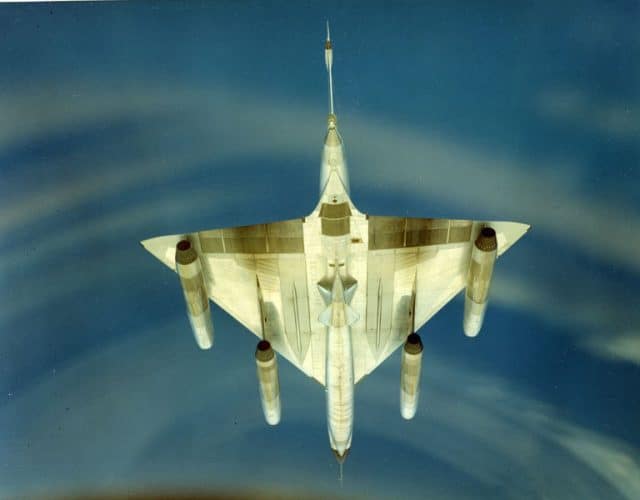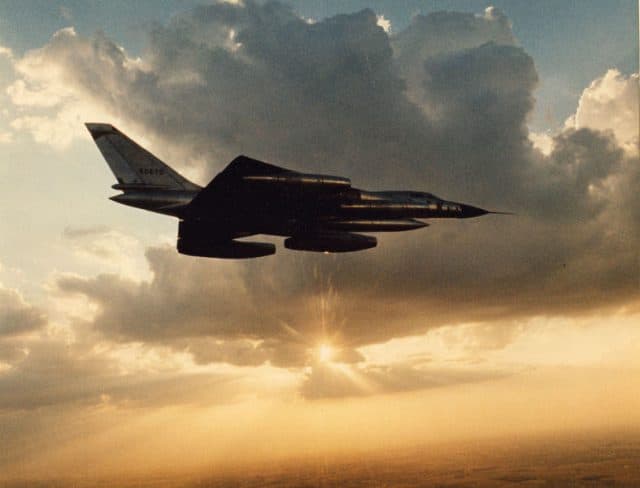The first supersonic jet bomber
This week, I am away camping in rainy North Wales. However, my friend Tatiana works for Picryl (https://picryl.com), a cross-platform application to find traces of history in photos, rare and ancient books, photos, posters and postcards in hundreds of sources like Library of Congress, the Internet Archive, and NASA. Tatiana is an aviation geek too and has written us a guest post about the first supersonic jet bomber. I found it fascinating and I hope you do too.
Soon after WWII, when the development of the first jets succeeded, scientists had to address the problem of breaking the sound barrier. An arms race emerged between the Soviet Union and the United States during the Cold War, and an increase in speed was seen as a goal of utmost importance.
At the beginning of the 1950s, both countries built supersonic fighters, so the struggle for supremacy became about building a jet bomber that would be capable of reaching other continents carrying nukes to strike from high altitudes.

The Convair B-58 Hustler carried out its first flight November 11, 1956. Forty-four days later this machine exceeded the speed of sound and, within six months, the bomber reached twice that speed. The B-58’s performance was initially rated very highly. According to expert opinion, the plane was able to reach about 87% of targets located in USSR territory.
The plane was easy to control: it was regarded as one of the safest jets that allowed in-air refueling. Moreover, it was less affected by turbulence than other planes with more flexible wings.
The B-58’s complex construction required highly skilled pilots and technical staff to operate. Those who flew this model were top-tier professionals and crews are still keeping warm relations even today.

Despite the early favorable records, the Hustler couldn’t stay operational for long enough. It was very expensive to build and maintain. It had limited ammunition capacity, and it failed to meet local war theater requirements. Operational problems led to a number of deadly accidents. By the time B-58 flights were finally suspended as a result of those accidents, 26 of 166 aircraft initially manufactured had been lost. Most of the remaining bombers were sold for scrap metal in 1977-1979.

There are now four B-58s ion museums, all located at the air bases where they had served. Two other jets remain at the “Edwards” and “Little Rock” bases, however they are just airframes with hardly any equipment inside.
If, like me, you enjoy old aviation photographs, I recommend that you take a look at the Picryl website. Its parent company, GetArchive, was founded by two Russian entrepreneurs whose love of travel and history motivated them to preserve historical accounts and events. Picryl was developed in order to offer an open publishing, cloud-based platform with an API server to allow for archives, libraries, museums and other organisations the technical tools they need to share their content online.
Their collection American Aviation Historical Society includes 381 photos of post-WWII aeroplanes. You can find pictures and descriptions of significant models, historical facts and much more in the whole collection here: https://picryl.com/collections/american-aviation-historical-society
They have more American photographs than anything else but here are some other collections I found interesting:
- Military Aviation, Pioneering Years from the Nederlands Instituut voor Militaire Historie
- Investigating Dirigible Disasters from the Joint Committee to Investigate Dirigible Disasters after the loss of the USS Akron in 1933,
- Heavier than Air: From first flights to commercial aviation with photographs from 1900 to 1939,
- and of course, because I’m predictable, the 1,093 photograph collection simply entitled Jets!








Thanks Sylvia,
Leaving the “scary bits” out occasionally does not harm your site on bit !
I can thoroughly recommend plowing through this list. Lots of very cool old pictures of even the most obscure aircraft.
http://q-zon-fighterplanes.com/
This will keep any pilot happy for hours, if not days.